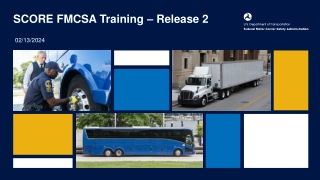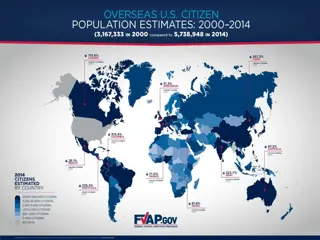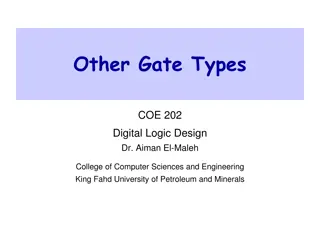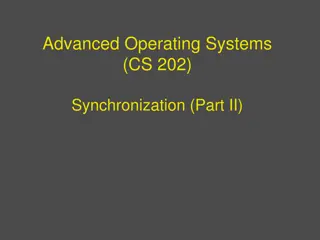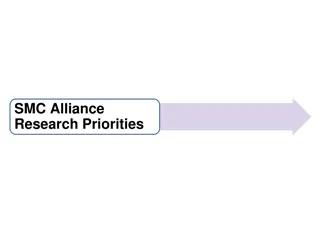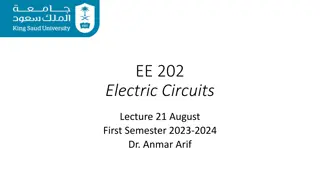
XPath in Information Organization and Retrieval
Explore the architectural perspective on the relationship structure between resources, link architecture, bibliometrics, and altmetrics. Discover the standard way of addressing parts of XML documents through XPath, viewing XML documents as a tree of nodes, and navigating the node tree along various axes.
Download Presentation

Please find below an Image/Link to download the presentation.
The content on the website is provided AS IS for your information and personal use only. It may not be sold, licensed, or shared on other websites without obtaining consent from the author. If you encounter any issues during the download, it is possible that the publisher has removed the file from their server.
You are allowed to download the files provided on this website for personal or commercial use, subject to the condition that they are used lawfully. All files are the property of their respective owners.
The content on the website is provided AS IS for your information and personal use only. It may not be sold, licensed, or shared on other websites without obtaining consent from the author.
E N D
Presentation Transcript
U N I V E R S I T Y O F C A L I F O R N I A , B E R K E L E Y S C H O O L O F I N F O R M A T I O N Plan for Today s Lecture(s) XPath The Architectural Perspective on Relationships Structure between Resources Link Architecture Bibliometrics and Altmetrics 1
U N I V E R S I T Y O F C A L I F O R N I A , B E R K E L E Y S C H O O L O F I N F O R M A T I O N INFO 202 Information Organization & Retrieval Fall 2013 Robert J. Glushko glushko@berkeley.edu @rjglushko 8 October 2013 Lecture 12.6 XPath
U N I V E R S I T Y O F C A L I F O R N I A , B E R K E L E Y S C H O O L O F I N F O R M A T I O N XPath (1) A standard way of addressing parts of XML documents Defines the structures and patterns used by XML transformations, queries, and forms Similar in concept to addressing files on the filesystem, i.e. at a shell or command prompt, but much more general and powerful XPath lets you move in all sorts of different directions and multiple levels in a single step 3
U N I V E R S I T Y O F C A L I F O R N I A , B E R K E L E Y S C H O O L O F I N F O R M A T I O N XPath (2) Key idea is to view an XML document as a tree of information items called "nodes" - this is more abstract than thinking of it as a stream of marked-up text XPath lets us select a set of matching candidate documents for retrieval that might be further analyzed for relevance 4
U N I V E R S I T Y O F C A L I F O R N I A , B E R K E L E Y S C H O O L O F I N F O R M A T I O N The Node Tree XPath describes the locations of addresses of parts of XML documents by navigating through the "node tree" along a "node axis" There are seven types of nodes, corresponding to the different kinds of "stuff" in XML documents (most important : "element," "attribute," and "text") There are thirteen different axes that specify different ways of following relationships among the nodes (the default is "child" -- look down the tree at the nodes directly linked as children) 5
A Tree For A Shakespeare Play Figure 10.2 From Manning (2008)
U N I V E R S I T Y O F C A L I F O R N I A , B E R K E L E Y S C H O O L O F I N F O R M A T I O N The Node Axes There are thirteen different axes that define different directions of "walking the node tree" depth-first starting from the context node; Depth-first means visiting all the children recursively throughout the entire document, shown using the numbering of the nodes in the following graphs The SELF Axis identifies the context node Other nodes are defined relative to the context node 7
The SELF Axis Identifies the context node
The CHILD Axis Identifies the children of the context node
The ATTRIBUTE Axis Identifies the attributes of the context node
The PARENT Axis Identifies the parent of the context node
The FOLLOWING Axis Identifies the nodes that follow the context node in document order, excluding its attributes and descrendants
The FOLLOWING SIBLING Axis Identifies the nodes that follow the context node in document order that have the same parent
The PRECEDING Axis Identifies the nodes that precede the context node in document order, excluding its attributes and ancestors
The PRECEDING SIBLING Axis Identifies the nodes that precede the context node in document order that have the same parent
U N I V E R S I T Y O F C A L I F O R N I A , B E R K E L E Y S C H O O L O F I N F O R M A T I O N Path Expressions Each Path Expression consists of Location Steps separated by "/" that specify: ... the direction taken by the step (the "Axes") ...the type and number of nodes selected ... additional filters for selecting specific nodes ("Predicates") // means start at the root of the tree The Child access is the default 17
U N I V E R S I T Y O F C A L I F O R N I A , B E R K E L E Y S C H O O L O F I N F O R M A T I O N XPath Location Examples Find the slides in the lecture: //slide Find their titles: //slide/title Find the title of the first slide: //slide[1]/title 18
U N I V E R S I T Y O F C A L I F O R N I A , B E R K E L E Y S C H O O L O F I N F O R M A T I O N Path Expressions Each Path Expression consists of Location Steps separated by "/" that specify: ... the direction in which each step moves (the "Axes") ...the type and number of nodes selected by the step ... additional filters for selecting specific nodes ("Predicates") 19
U N I V E R S I T Y O F C A L I F O R N I A , B E R K E L E Y S C H O O L O F I N F O R M A T I O N Location Path Processing Start with a given context For each location step: Based on the axis, select the nodes on the axis Reduce the set to the nodes that satisfy the node test Apply the selection predicate(s) to further filter the node set Take the remaining node set as the context for the next location step 20
U N I V E R S I T Y O F C A L I F O R N I A , B E R K E L E Y S C H O O L O F I N F O R M A T I O N Tree In, Selection Out XPath also has numerous arithmetic, logical, and string operators and many built-in functions The result of the XPath evaluation is a selection //img[not(@alt)] select all images which have no alt attribute count(//img) return the number of images /descendant::img[3]/@src return the third image's src URI 21
U N I V E R S I T Y O F C A L I F O R N I A , B E R K E L E Y S C H O O L O F I N F O R M A T I O N INFO 202 Information Organization & Retrieval Fall 2013 Robert J. Glushko glushko@berkeley.edu @rjglushko 10 October 2013 Lecture 13.1 The Architectural Perspective on Relationships
U N I V E R S I T Y O F C A L I F O R N I A , B E R K E L E Y S C H O O L O F I N F O R M A T I O N The Architectural Perspective: Degree or Arity The architectural perspective embodies Kent s definition of relation as A sequence of categories, that includes one thing from each category The DEGREE or ARITY of a relationship is the number of different "entity types" or "resource categories" in the relationship Husband is-married-to Wife is BINARY Person is-married-to Person is UNARY 23
U N I V E R S I T Y O F C A L I F O R N I A , B E R K E L E Y S C H O O L O F I N F O R M A T I O N The Architectural Perspective: Cardinality The CARDINALITY is the number of instances that can be associated with each entity type Husband is-married-to Wife is ONE-TO-ONE, because husbands have only one wife and vice versa (in monogamous societies) Father is-parent-of Child is ONE-TO-MANY Homer is-parent-of Bart AND Lisa AND Maggie is one-to-three 24
U N I V E R S I T Y O F C A L I F O R N I A , B E R K E L E Y S C H O O L O F I N F O R M A T I O N Modeling Relationships as Binary Ones Relationships can always be modeled as binary ones, but this makes some relationships implicit that were explicit Binary relationships are relationship "triples" with a "subject", "predicate," and "object" With binary relationships the reason for the relationship can often be interpreted in both directions (one is the inverse of the other) With triples we can combine relationships into a graph and "reason" over the set of relationships when they have common components 25
U N I V E R S I T Y O F C A L I F O R N I A , B E R K E L E Y S C H O O L O F I N F O R M A T I O N The Architectural Perspective: Directionality The DIRECTIONALITY of a relationship defines the order in which the arguments of the relationship are connected A ONE-WAY or UNI-DIRECTIONAL relationship can be followed in only one direction A BI-DIRECTIONAL one can be followed in both directions All symmetric relationships are bi-directional, but not all bi-directional relationships are symmetric 26
U N I V E R S I T Y O F C A L I F O R N I A , B E R K E L E Y S C H O O L O F I N F O R M A T I O N The Architectural Perspective {and,or,vs.} the Structural Perspective The architectural perspective is abstract and prescriptive It defines what kinds of relationships can be created The structural perspective is concrete and descriptive It says "this is what exists" and describes the actual patterns of association, arrangements, proximity, or connection between resources" 27
U N I V E R S I T Y O F C A L I F O R N I A , B E R K E L E Y S C H O O L O F I N F O R M A T I O N INFO 202 Information Organization & Retrieval Fall 2013 Robert J. Glushko glushko@berkeley.edu @rjglushko 10 October 2013 Lecture 13.2 Introduction to Describing Structure Between Resources
U N I V E R S I T Y O F C A L I F O R N I A , B E R K E L E Y S C H O O L O F I N F O R M A T I O N Between-Resource Structure Links between printed or digital documents citations, cross refs, notes Links between web pages Links communication and information flows - between people, organizations, any other kind of interacting actors or resources social networks We can analyze all of these with some common concepts and abstractions, which we will introduce in as gentle a way as possible 29
U N I V E R S I T Y O F C A L I F O R N I A , B E R K E L E Y S C H O O L O F I N F O R M A T I O N Links Between Documents We can distinguish: The starting point of the link (the ANCHOR) The end point of the link (the DESTINATION) How the starting point of the link is presented (the LINK MARKER) How (if at all) the reason for the link is indicated (the LINK TYPE) 30
U N I V E R S I T Y O F C A L I F O R N I A , B E R K E L E Y S C H O O L O F I N F O R M A T I O N Graph Theory We can apply graph theory to understanding relationships from a structural perspective A GRAPH treats resources as VERTICES or NODES The pairwise relationships between resources are represented by the EDGES that connect them If the edges have an associated direction, this is a DIRECTED graph A WEIGHT can be assigned to each edge if the relationship has a numerical aspect (distance, cost, time, etc.) 33
The Origins of Graph Theory (Euler 1735) 2 islands, 7 bridges can you visit all 4 land masses without crossing any bridge more than once? Euler (1735) proved you couldn t and invented much of graph theory to explain it Euler s Seven Bridges of K nigsberg Problem 34
U N I V E R S I T Y O F C A L I F O R N I A , B E R K E L E Y S C H O O L O F I N F O R M A T I O N Computing the Properties of Graphs Reachability is there a path between any two nodes in the graph? Shortest path if there are multiple paths between two nodes, which is the shortest? Centrality which nodes are the most connected or have the average shortest paths to the other nodes? Subgraph discovery are there sub-graphs that are completely contained in a larger graph? 35
U N I V E R S I T Y O F C A L I F O R N I A , B E R K E L E Y S C H O O L O F I N F O R M A T I O N Reachability and Transitive Closure The REACHABILITY property of a graph is "can you get there from here We can determine whether a path exists between any two nodes in a graph by calculating the transitive closure of the graph; the most commonly used approach is Warshall's algorithm http://www.cs.sunysb.edu/~skiena/combinatorica/anim ations/graphpower.html 36
U N I V E R S I T Y O F C A L I F O R N I A , B E R K E L E Y S C H O O L O F I N F O R M A T I O N Shortest Path The shortest path between two nodes in a graph can be calculated using Dijkstra s algorithm The shortest path problem is ubiquitous and its solution has obvious value travel, transportation, financial arbitrage, grocery shopping If the graph edges aren t weighted and we only care about connectivity, we have the familiar degrees of separation situation For mathematicians; for actors 37
Minimum Spanning Tree A spanning tree of a graph is a subgraph that is a tree that connects all the vertices what s the shortest one, and why would we care? 38
U N I V E R S I T Y O F C A L I F O R N I A , B E R K E L E Y S C H O O L O F I N F O R M A T I O N Moving Beyond Reachability We've been treating relationships in purely structural terms - is one thing connected to another - but we can refine that into two perspectives: RELATIONAL analysis treats links as indicators of the amount of connectedness or the direction of flow between documents, people, groups, journals, disciplines, domains, organizations, or nations EVALUATIVE analysis treats links as indicators of the level of quality, importance, influence or performance of documents, people, groups 39
U N I V E R S I T Y O F C A L I F O R N I A , B E R K E L E Y S C H O O L O F I N F O R M A T I O N Analysis of Large-Scale Social & Information Networks (Kleinberg) The Web lets us observe, measure and analyse social interaction at a level of scale and resolution that was previously unimaginable, observing social phenomena that had previously remained essentially unrecorded and invisible Social social network firms exploit triadic closure the increased tendency for two people to form a relationship when they people in common People who are the boundaries of one s social networks weak ties can be crucial sources of information 40
U N I V E R S I T Y O F C A L I F O R N I A , B E R K E L E Y S C H O O L O F I N F O R M A T I O N Analysis of Large-Scale Social & Information Networks (Kleinberg) Many social networks are directed graphs because of asymmetries in status, power, or values Identifying influencers and predicting their influence is the billion dollar question for web-based social networks If you liked this paper, you ll love 203 next semester. If you didn t like this paper, never mind See Coursera course on Social Network Analysis 41
Kite Network Example from http://www.orgnet.com/sna.html 42
U N I V E R S I T Y O F C A L I F O R N I A , B E R K E L E Y S C H O O L O F I N F O R M A T I O N Measures of Centrality Degree Centrality number of direct connections Betweenness a location in the network that interconnects different clusters Closeness low average path length 43
Subgraphs In a social network setting, connection subgraphs can identify the few most likely paths of transmission for a disease (or rumor, or information-leak, or joke) or spot whether an individual has unexpected ties to any members of a list of individuals. Faloutsos, Christos, Kevin S. McCurley, and Andrew Tomkins. "Connection subgraphs in social networks 2004. 44
U N I V E R S I T Y O F C A L I F O R N I A , B E R K E L E Y S C H O O L O F I N F O R M A T I O N NSA s Social Network Analysis The agency was authorized to conduct large-scale graph analysis on very large sets of communications metadata without having to check foreignness of every e-mail address, phone number or other identifier, the document said. The agency can augment the communications data with material from public, commercial and other sources, including bank codes, insurance information, Facebook profiles, passenger manifests, voter registration rolls and GPS location information, as well as property records and unspecified tax data, according to the documents. NSA Gathers Data on Social Connections of US Citizens. NY Times 28 Sept 2013 45
U N I V E R S I T Y O F C A L I F O R N I A , B E R K E L E Y S C H O O L O F I N F O R M A T I O N The Web lets us observe, measure and analyse social interaction at a level of scale and resolution that was previously unimaginable, observing social phenomena that had previously remained essentially unrecorded and invisible 47
U N I V E R S I T Y O F C A L I F O R N I A , B E R K E L E Y S C H O O L O F I N F O R M A T I O N INFO 202 Information Organization & Retrieval Fall 2013 Robert J. Glushko glushko@berkeley.edu @rjglushko 10 October 2013 Lecture 13.3 Bibliometrics and Altmetrics
U N I V E R S I T Y O F C A L I F O R N I A , B E R K E L E Y S C H O O L O F I N F O R M A T I O N Citation Signals and Polarity (1) When one resource cites another there is often a lexical signal that indicates how a writer views the relationship of a citation to the text from which the citation is made This concept comes from rhetoric and critical theory but is relevant to document engineering Pedantic folks call this "genre of invocation" -- distinguishing things like "cite, mention, acknowledged 49
U N I V E R S I T Y O F C A L I F O R N I A , B E R K E L E Y S C H O O L O F I N F O R M A T I O N Citation Signals and Polarity (2) A citation or link without a signal suggests by default that the citation supports the current text Explicit signals that indicate positive polarity include "See," "See also," "See generally," and "Cf." Signals that indicate negative polarity include "But see" and "Contra" 50

